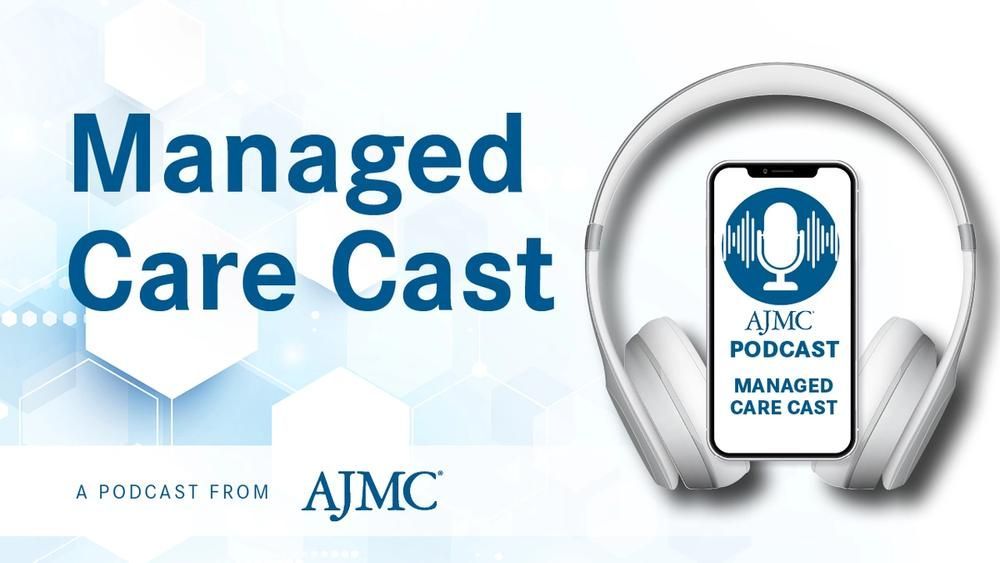Commentary
Article
Contributor: Leveraging Telehealth to Improve Access to Care for Maternal Health
Author(s):
This article explores the challenges and highlights actionable telehealth solutions that enhance access to care, particularly for mothers at higher risk of postpartum depression.
Maternal health care in the US faces a growing crisis of access, particularly in maternity care deserts—areas with limited or no access to hospitals or birth centers to provide obstetric care, where no obstetric providers are available, or where access to care is limited by distance or availability. According to the March of Dimes, more than 2.2 million women of childbearing age live in these deserts.1 Limited access to care increases risks during pregnancy and postpartum, including higher rates of postpartum depression, premature delivery, and other maternal and pediatric complications. Maternity care deserts are a significant barrier to maternal and child health, disproportionately impacting rural and underserved populations. This issue is only worsening, but leveraging telehealth and other physician extenders presents an opportunity to bridge the gap in maternal health care access. Using data from the March of Dimes maternity care deserts report and our analysis of postpartum depression screening outcomes, this article explores the challenges and highlights actionable telehealth solutions that enhance access to care, particularly for mothers at higher risk of postpartum depression.
The Impact of Maternity Care Deserts on Postpartum Depression
An analysis of March of Dimes maternity care deserts data reveals stark disparities: Mothers living in maternity care deserts have a 230% (P = .0488) higher likelihood of scoring in the high-risk range for postpartum depression on the Edinburgh Postnatal Depression Scale (EPDS) compared with those with adequate maternal care access. Initial data show that the rate of high-risk of postpartum depression in maternity care deserts (13.5%; n = 52) is statistically significantly higher than rates in areas with adequate access (4.1%; n = 1446). (High risk of postpartum depression defined as scoring 13 or higher on the EPDS.) Lack of timely access to maternal and mental health services exacerbates health inequities and increases health care costs associated with unmanaged postpartum depression. This can also significantly impact care provided for a newborn, including feeding, sleeping, and parental bonding.
Source: March of Dines maternity care deserts report

The Role of Telehealth in Bridging the Gap
Telehealth has become a vital tool in addressing barriers to maternal health care by providing timely and accessible virtual prenatal and postpartum care for new and expecting mothers. Effective telehealth models, particularly those serving Medicaid populations, incorporate several key elements. These include offering free virtual prenatal and postpartum visits that facilitate the use of validated depression screening tools, such as the EPDS. Mothers who screen at high risk for depression can be promptly warm-transferred to care managers, who provide immediate access to virtual behavioral health services and other supportive resources. This may include lactation support, nutrition counseling, pelvic floor physical therapy, sleep consultations, peer support groups, and financial assistance programs.
Consistent and ongoing follow-up EPDS screenings are essential for mothers who initially score in the high-risk range, ensuring that they receive the appropriate care and referrals to address their needs effectively. This telehealth-based approach serves as a replicable model to bridge gaps in access to care, enhance maternal health outcomes, and support underserved populations. It able enables the introduction of and connection to other support providers including doulas, night nurses for sleeping relief, caregivers, and lactation consultants. It's important to note, however, that a successful referral approach requires more than simply providing patients with a list of resources. Instead, support staff must serve as expert navigators, actively facilitating connections to ensure that mothers can access the necessary resources efficiently and without confusion.
Engagement Strategies: A Tailored Approach
Our data reveal that engaging mothers in maternity care deserts requires more intensive outreach than those with better access. Our program engages mothers in postpartum care visits within a 7- to 84-day postpartum measurement window. An engagement touchpoint can be defined as an attempt to reach the mother to assist in scheduling their appointment, through either digital (SMS and email) communication or phone call. Key insights show that mothers in maternity care deserts require 30% more engagement touchpoints than mothers living in areas with adequate care access. Phone calls are the most effective method for influencing appointment bookings in care deserts, whereas mothers outside of deserts respond more effectively to SMS. Compared with mothers not in care deserts, those in deserts require 84% more phone calls, 24% less SMS, and 255% less email. Additional research is needed to determine whether this can be attributable to the prevalence lower broadband access rates in maternal care deserts and the digital divide severity.
Cost and Utilization Considerations
Postpartum depression increases both direct and indirect health care costs. Proactively, addressing postpartum depression proactively through telehealth can lead to reduced hospital admissions, readmissions, and emergency department visits, and lower long-term mental health service costs. According to Mathematica, untreated perinatal mood disorders cost the US economy over $14 billion annually.2 Investing in accessible, proactive telehealth services can help mitigate these expenses while improving health outcomes.
Call to Action
In the work we have done supporting expanded maternal care access, the data lend 4 immediate steps to help improve health among the most at-risk American mothers. First, it is critical to expand telehealth accessibility in maternity care deserts. States and health plans should implement virtual postpartum visits with integrated depression screening tools like the EPDS. Additionally, it is important to promote policy changes support telehealth expansion more broadly. This including advocating for reimbursement parity for telehealth visits. There should also be support federal and state initiatives to enhance broadband access in rural areas. State can consider emulating Kentucky’s 211.1234,3 which provides a dedicated hotline that offers immediate clinical consultation over the phone and expedited access for any necessary mental health consultations or referrals.
Second, it is essential to adopt tailored, patient-centric engagement strategies. As gleaned from the data, phone-based outreach for mothers in care deserts should be prioritized to increase engagement. Once engagement connections are made, efforts must be made to accommodate real-time, immediate access to appointment availability. The nationwide average wait for the third next available appointment is 38 days.4 Operationalizing immediate access to appointments not only alleviates the psychologic burden5 of waiting for an appointment, but also adds additional convenience to mothers while improving completion rates.
Third, behavioral health support services need to be integrated. Payers should ensure immediate referral pathways to virtual mental health services for mothers screening at high risk for postpartum depression. This can be supported by not only behavioral health clinicians but also doulas, peer support, and other care guides. One helpful policy pathway for states is to model California’s AB 19363,6 a program that emphasizes the importance of mental health screenings requiring at least 1 mental health screening during pregnancy, at least 1 additional screening during the first 6 weeks of the postpartum period, and an additional postpartum screening, if deemed medically necessary.
Conclusions
Addressing fair, accessible, high quality services in maternity care requires innovative, scalable solutions. Telehealth offers a lifeline to mothers in maternity care deserts, reducing barriers to essential care and improving maternal mental health outcomes. By implementing data-driven engagement strategies and comprehensive telehealth programs, stakeholders can ensure equitable access to care and support healthier futures for mothers and babies alike.
References
- Maternity care deserts report. March of Dimes. 2022. Accessed January 2025. https://www.marchofdimes.org/maternity-care-deserts-report-2022
- Societal Costs of Untreated Perinatal Mood and Anxiety Disorders in the United States. Mathematica Policy Research; April 2019. Accessed January 2025. https://www.mathematica.org/publications/societal-costs-of-untreated-perinatal-mood-and-anxiety-disorders-in-the-united-states
- 211.123: Kentucky Maternal Psychiatry Access Program. Kentucky Legislature. July 2024. Accessed January 2025. https://apps.legislature.ky.gov/law/statutes/statute.aspx?id=55571
- Jaklevic MC. In the U.S., wait times to see a doctor can be agonizingly long. Health Journalism. August 7, 2024. Accessed January 2025. https://healthjournalism.org/blog/2024/08/in-the-u-s-wait-times-to-see-a-doctor-can-be-agonizingly-long/
- Gagliardi AR, Yip CYY, Irish J, et al. The psychological burden of waiting for procedures and patient-centred strategies that could support the mental health of wait-listed patients and caregivers during the COVID-19 pandemic: a scoping review. Health Expect. 2021;24(3):978-990. doi:10.1111/hex.13241
- AB 1936: maternal mental health screenings. California Legislature September 2024. Accessed January 2025. https://leginfo.legislature.ca.gov/faces/billTextClient.xhtml?bill_id=202320240AB1936#:~:text=The%20program%20shall%20consist%20of,necessary%20and%20clinically%20appropriate%20in





